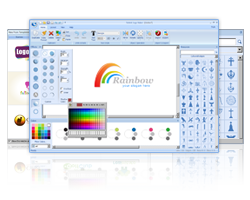Application Modernization Roadmap: Moving to the Cloud Safely and Fast

Modern advancement in technology is a great spur to action for many businesses and cloud migration seems to be the new normal and modernization initiative for companies looking to revamp their strategy.
In fact, as of April 19, 2020, the global cloud traffic as a percentage of internet traffic grew from 1.26% to 1.83% and investors have been investing heavily in the cloud sector with total assets in the three biggest cloud exchange-traded funds (ETFs) reaching US$6 billion in August 2020.
Although the pandemic and subsequent lockdowns were a major contributor to these massive migrations, most companies now shift their legacy software and storage to the cloud to reduce operational costs yet deliver great service with artificial intelligence, data science, and others.
Organizations also adopt the cloud to deliver exceptional customer-centered services, accelerate innovation, and improve time to market.
Nevertheless, before leveraging this opportunity, a set of more developed technical and architectural transformation needs to be employed for a successful migration. Below, we'll examine and break down the roadmap to efficient legacy migration to the cloud.
What is App Modernization?
Simply defined, App modernization is the step-by-step procedure involved in converting your existing legacy applications and modernizing their internal architecture, platform infrastructure, and their features.
The process of application modernization today is often typically focused on on-premises, monolithic applications, and their transition into the cloud architecture and release patterns.
There are several benefits of application modernization which includes:
- Improved velocity of new feature delivery
- Better performance and scalability of applications due to re-platforming
- Exposed functionality of existing applications
- Scalable long term data and IT strategy
Additionally, to succeed in application modernization like other things you need a strategy that offers the given application a clear and concise route to improving customer experience as well as return on investment (ROI).
Roadmap to Successful App Modernization
Successful app modernization focuses on the combination of the platform, improved application functionality, and application architecture.
Reverse Engineering
As the technology and business requirements change, software systems need to be updated accordingly.
However, it's important to first understand the initial requirements which should be focused on business goals and then the steady modernization activities come afterward.
Hence, great application modernization often begins with the reverse engineering of the existing system. It's recommended to examine the legacy source code to properly restore lost information about design patterns, specifications, and prepare cautiously for careful shift and change to the system.
By doing this, you simplify the future system maintenance and evolution.
Architectural Transformation
The next step to a smooth application modernization is disintegrating software architecture into meaningful detached parts that are loosely bonded and highly organized.
At Fortyseven Software professionals, we decomposed legacy software architecture into self-sufficient components, with each dealing with a specific, meaningful set of functionality.
Following this process breaks down the modernization process, reducing the complexity and risk associated with large-scale architectural alterations.
Application decoupling and polarization speeds application deployment as well as reducing the fault impact during periods of server errors.
Furthermore, microservice-based architecture leverages major cloud capabilities - dynamic scaling as only detached nodes scale quickly and easily on demand. Not alone does this optimize time, it also keeps application at much higher availability.
Containerization
Speaking of modular architecture, application modernization and cloud migration can become unreasonably problematic due to the large number of independent components, making it more cumbersome to manage and deploy applications successfully.
The good news here is, containerization is a suitable solution to eliminate these problematic conditions.
Containerization is basically the process of decoupling with containers encapsulating a lightweight runtime environment for the application and other essential components including libraries, coda, configuration files, and so forth.
Thus, making it easier to deploy container-based applications consistently and easily regardless of the environment - public cloud, private data center, or even developer's system.
Additionally, containerization helps to minimize costs by eliminating the discomfort of having to allocate one virtual machine for each module.
Overall, containerization provides a clean separation of applications and simplifies the operational processes. It also features hardware-independent containers, making them highly convenient and easy to migrate.
DevOps
In the process of application modernization, DevOps remains a key practice.
DevOps primarily focus on removing limitations between operation and development while also offering automated capabilities which help increase both the productivity and precision of the development team.
It also indicates continuous integration of remodeled codes with central code storage, delivering automated and error-free results that can be quickly deployed.
The automated testing features associated with DevOps helps reduce costs and ensures faster deployment by discovering errors in their early stage.
Additionally, leveraging automation helps reduce human error and improves the performance of the application contributing to reduced expenses and operational efficiencies.
A Final Word on Cloud Migration
Successful cloud migration or legacy application transformation often requires great technical know-how and multiple including variations of legacy system optimizations.
You'll first need to properly understand each specific case, then focus on addressing them tactfully to succeed with application modernization.
In case your in-house team lacks the required experience in cloud migration, it's best to outsource to a third-party vendor who handles the difficulties for you.
Luckily, our experts at Fortyseven https://fortyseven47.com/ software professionals have been helping clients with the full modernization cycle, from feasibility studies to creating tailored modernization strategies and successful implementation. Feel free to reach out to us today.

-
Logo Maker
-
- DIY vectorl logo design in minutes
-
-
It is an intuitive and extremely simple logo design tool for you to fast design company logo, business logo, web signature, button, icon, etc. Rich built-in templates, preset color & effect styles, and well designed logo images will fully satisfy your needs and make your logo unique. The great editing capability also ensures a smooth and pleasant logo design process.
-




